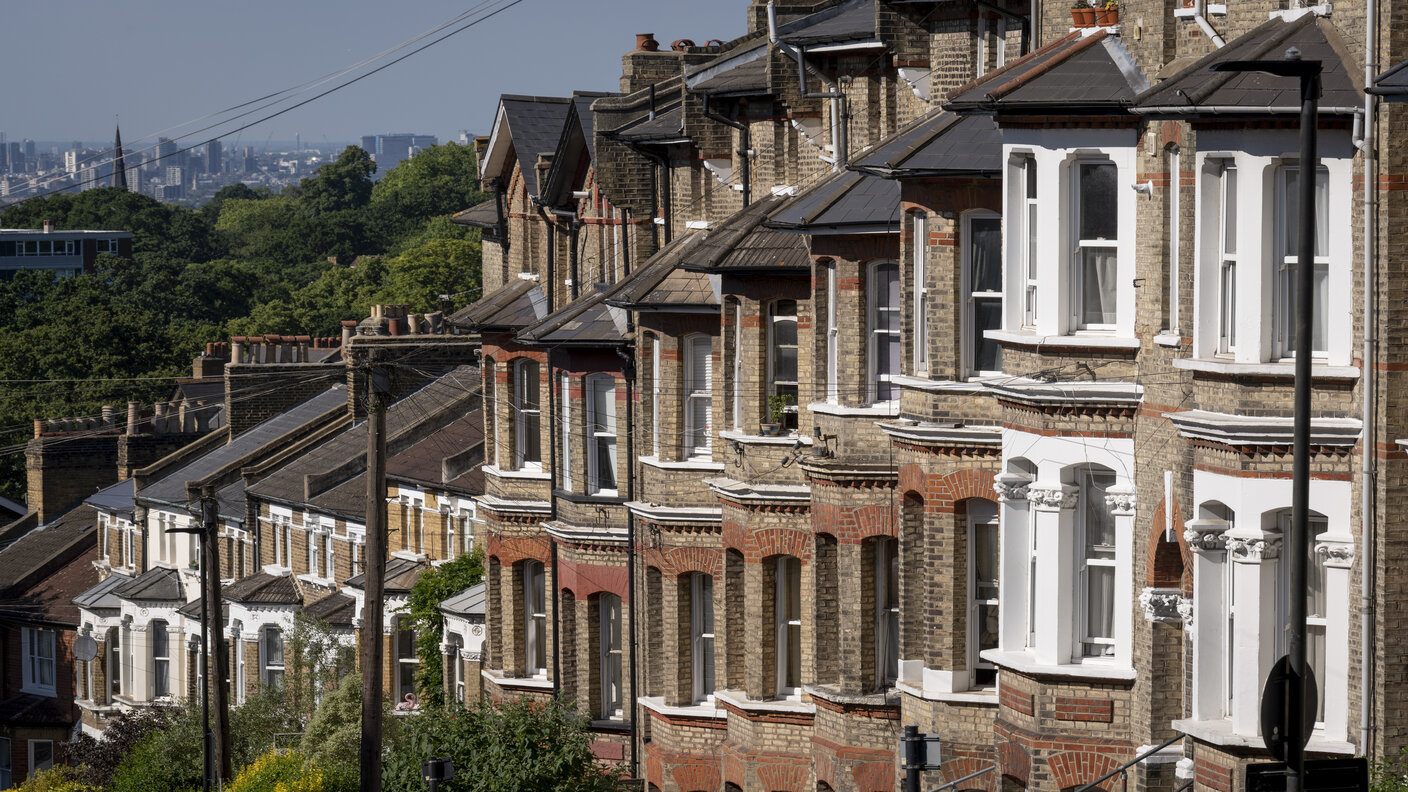Halifax: House prices fall by almost £1,000
Latest Halifax house price index reveals the fall in average house prices brings to an end three months of steady rises - what does it mean for the housing market?


Average UK house prices fell by around £1,000 in April, bringing to an end three months of increases, according to the latest Halifax house price index – one of many house price indexes that have been showing a mixed picture of where the property market is heading.
Halifax showed that the typical property value fell by 0.3% month-on-month, with the cost of an average home now at £286,896 in April - a £995 decrease from last month.
Halifax says further downward movement in prices can be expected over the coming months, with house prices in the south under significant pressure.
MoneyWeek
Subscribe to MoneyWeek today and get your first six magazine issues absolutely FREE

Sign up to Money Morning
Don't miss the latest investment and personal finances news, market analysis, plus money-saving tips with our free twice-daily newsletter
Don't miss the latest investment and personal finances news, market analysis, plus money-saving tips with our free twice-daily newsletter
Kim Kinnaird, director at Halifax Mortgages, says the price movements over recent months have mirrored the turbulence seen in borrowing costs.
“The sharp fall in prices we saw at the end of last year after September’s ‘mini-budget’ preceded something of a rebound in the first quarter of this year as economic conditions improved,” she says.
Now, a number of factors combine to suggest a more stable market for potential buyers and sellers over the coming months.
A resilient economy, a robust labour market, and the expectation that consumer price inflation will fall are all positive factors that the housing market is currently adapting to.
Notably, more stable mortgage rates from lenders are giving “important certainly” to potential buyers, Kinnaird says, although rates remain well above average.
“While the housing market as a whole remains subdued, the number of properties for sale is also slowly increasing, as sellers adapt to market conditions. Alongside a market-wide uptick in mortgage approvals, these latest figures may indicate a more steady environment,” she says.
But cost of living concerns remain real for many households - a factor that could continue to subdue market activity and may further drive down prices.
“Combined with the impact of higher interest rates gradually feeding through to those re-mortgaging their current fixed-rate deals, we should expect some further downward pressure on house prices over the course of this year,” Kinnaird says.
Interest rates have risen eleven times since December 2021 and there is talk of another quarter-point increase this week - we explore whether interest rates will go up in our article will interest rates go up.
But rising rates have not deterred buyers, with mortgage approvals shooting up by 18% in March compared to February, according to Bank of England statistics.
Where have UK house prices been falling the most?
A mixed picture is emerging for house prices across the UK, with prices slumping more sharply in the south.
The regions of southern England have seen average house prices fall over the last year, with the South East registering the largest dip. Prices there have fallen by 0.6% to an average value of £387,469.
Typically, it’s these regions, including Greater London, Eastern England, and the South West, where buyers face the most expensive average property prices, and therefore the biggest impact of higher borrowing costs.
London continues to have the costliest homes of anywhere in the country at an average of £538,409 although the annual rate of growth is now negative (-0.2%).
Elsewhere, all other regions and nations across the UK saw the rate of annual property price inflation remain in positive territory during April.
The West Midlands posted the strongest annual growth of 3.1%, with an average property price of £249,554, while Northern Ireland saw increases of 2.7%, taking the average price to £186,846.
Scotland (+2.2%, £201,489) and Wales (+1.0%, £216,559) have also seen average property prices increase year-on-year.
Get the latest financial news, insights and expert analysis from our award-winning MoneyWeek team, to help you understand what really matters when it comes to your finances.
Tom is a journalist and writer with an interest in sustainability, economic policy and pensions, looking into how personal finances can be used to make a positive impact.
He graduated from Goldsmiths, University of London, with a BA in journalism before moving to a financial content agency.
His work has appeared in titles Investment Week and Money Marketing, as well as social media copy for Reuters and Bloomberg in addition to corporate content for financial giants including Mercer, State Street Global Advisors and the PLSA. He has also written for the Financial Times Group.
When not working out of the Future’s Cardiff office, Tom can be found exploring the hills and coasts of South Wales but is sometimes east of the border supporting Bristol Rovers.
-
 The shape of yields to come
The shape of yields to comeCentral banks are likely to buy up short-term bonds to keep debt costs down for governments
-
 The sad decline of investment clubs – and what comes next
The sad decline of investment clubs – and what comes nextOpinion Financial regulation and rising costs are killing off investment clubs that once used to be an enjoyable hobby, says David Prosser
-
 Halifax: House price slump continues as prices slide for the sixth consecutive month
Halifax: House price slump continues as prices slide for the sixth consecutive monthUK house prices fell again in September as buyers returned, but the slowdown was not as fast as anticipated, latest Halifax data shows. Where are house prices falling the most?
-
 Rents hit a record high - but is the opportunity for buy-to-let investors still strong?
Rents hit a record high - but is the opportunity for buy-to-let investors still strong?UK rent prices have hit a record high with the average hitting over £1,200 a month says Rightmove. Are there still opportunities in buy-to-let?
-
 Pension savers turn to gold investments
Pension savers turn to gold investmentsInvestors are racing to buy gold to protect their pensions from a stock market correction and high inflation, experts say
-
 Where to find the best returns from student accommodation
Where to find the best returns from student accommodationStudent accommodation can be a lucrative investment if you know where to look.
-
 The world’s best bargain stocks
The world’s best bargain stocksSearching for bargain stocks with Alec Cutler of the Orbis Global Balanced Fund, who tells Andrew Van Sickle which sectors are being overlooked.
-
 Revealed: the cheapest cities to own a home in Britain
Revealed: the cheapest cities to own a home in BritainNew research reveals the cheapest cities to own a home, taking account of mortgage payments, utility bills and council tax
-
 UK recession: How to protect your portfolio
UK recession: How to protect your portfolioAs the UK recession is confirmed, we look at ways to protect your wealth.
-
 Buy-to-let returns fall 59% amid higher mortgage rates
Buy-to-let returns fall 59% amid higher mortgage ratesBuy-to-let returns are slumping as the cost of borrowing spirals.
